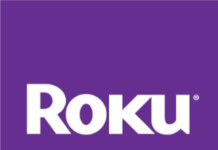Ed Markey (D-MA) has either been at the helm of the Subcommittee for Telecommunications and the Internet ) now the Subcommittee on Subcommittee on Communications, Technology, and the Internet) or the Ranking Member of the minority party, and as such has watched the DTV transition since its infancy. He can’t believe it all started 22 years ago. And he praised Acting FCC Chair Michael Copps for steering the nation down the last couple of miles.
Markey said:
“When I held the first Congressional hearing on then-High Definition TV (HDTV) in the early Fall of 1987, I never imagined that it would take almost 22 years to reach this moment.
“I want to commend Acting FCC Chairman Michael Copps for quarterbacking an excellent, late-in-the-game DTV drive on behalf of the viewing public. Undoubtedly there will be some confusion and dislocation, especially among the consumers most reliant upon free over-the-air television. Yet the situation would have been far worse without the efforts of acting Chairman Copps, FCC Commissioners Adelstein and McDowell, and the larger efforts of the Obama Administration – in particular NTIA — to secure the additional time and funding needed to educate consumers and convert more households to digital capability. Indeed, the delay of the transition from earlier this year has allowed over 3 and a half million additional households to prepare for the switch.
“Looking back, there were several critical decisions that set the stage for the digital television era, but in my view, the key moment came when we shifted away from pursuing an analog HDTV standard to achieving a digital standard in the first place. While the decision to embrace digital technology seems like a foregone conclusion today, there was in fact a fierce policy battle at the time.
“After my hearing in October of 1987, the FCC created the Advisory Committee on Advanced Television Service to investigate how the U.S. would create High Definition TV, but the panel initially pursued an ‘analog’ standard for the nation. When researchers at M.I.T. and General Instruments subsequently suggested the real possibility of achieving a digital standard for HDTV, I aggressively advocated for such a switch and successfully convinced the FCC in 1990 to begin pursuing a digital standard.
“This was a game-changing moment.
“Without question there were many setbacks along the multi-year digital TV effort. First, the short-sighted decision not to require digital TV tuners in television receivers earlier in the transition so that consumers wouldn’t continue to buy TV sets – some 30 million a year – that would subsequently need additional equipment to display the new digital signals. Second, was a regrettable FCC decision not to establish multicast must-carry carriage opportunities for those broadcasters airing enhanced local programming of importance to the local community.
“My hope is that tomorrow goes as smoothly as possible for viewers across the country. And my hope for the broadcast television industry is that now that licensees have fully entered the digital era, that they maximize the opportunity in their possession to secure broadcasting’s future. The broadcasters should use the versatility digital technology provides in order to serve the viewing public in a way that reflects the finest traditions of public service broadcasting.”




